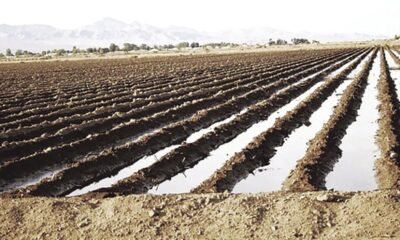home
Innovative Strategies: How Valley Farmers Are Adapting to Colorado River’s Diminishing Water Supply

The Colorado River Basin is experiencing its most severe drought in over 1,200 years, leading to significant reductions in water availability for Central Arizona’s agricultural sector. Farmers are now feeling the pinch as allocations from the Colorado River have been cut.
In Phoenix, the situation has prompted farmers like Mark Schnepf of Schnepf Farms in Queen Creek to adapt. Urban development now envelops the farm, yet Schnepf maintains a hopeful outlook amidst ongoing water challenges. He points out that farmers are the first to experience reductions, bearing the brunt of water shortages before others do.
Schnepf Farms, which has grown to become the largest agritainment farm in the nation, offers more than just agriculture; it features amusement rides and seasonal events. Presently, the farm boasts 4,000 peach trees across six varieties and also cultivates mixed vegetables and hay. However, with 60 to 70 percent of water use derived from the Colorado River, the cuts are causing notable complications for operations.
“We have ample access to wells, but others aren’t as fortunate,” Schnepf explained. “While we can draw from aquifers and local lake systems, many of our counterparts in Pinal County must rely exclusively on groundwater, which is insufficient given their land size.” Some farmers in these areas now face a complete reduction in their Colorado River allocations.
Even though Schnepf’s water supply is solidly supported by wells, the financial burden of pumping water from underground sources cannot be ignored. The ongoing drought has forced him and other farmers to look for more efficient methods to utilize their water resources.
Schnepf outlined the challenge further, noting urban development takes precedence over agricultural use in times of extreme water shortages. “If worse comes to worst, farmers may have to sell their land for housing,” he said.
While Schnepf Farms has successfully reduced its water consumption and cultivated lower water-use crops, the future uncertainties surrounding Colorado River allocations loom large. The existing operating guidelines for the river will expire at the end of 2026, with new rules expected to be established thereafter. Arizona is actively collaborating with neighboring states to develop strategies for a sustainable river system to support its farming community.


















